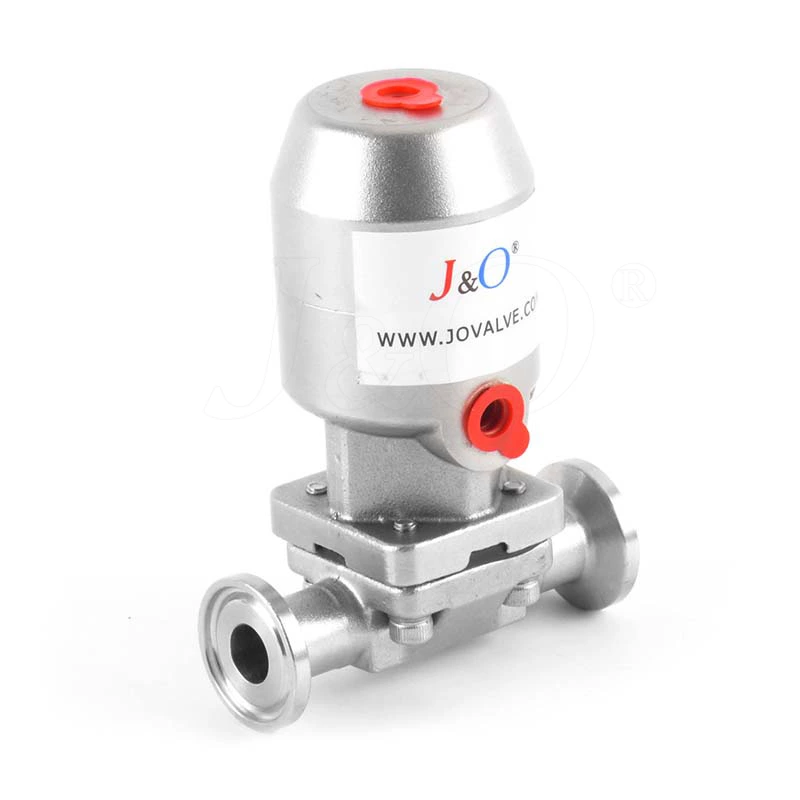Pneumatic Diaphragm Valve Is A Special Form Of Shut-off Valve
Sanitary Diaphragm Valve is a special form of cut-off valve, which appeared in the 1920s. Its opening and closing parts are a diaphragm made of soft material, which separates the inner cavity of the valve body from the inner cavity of the valve cover and the driving parts, so it is called a pneumatic diaphragm valve. The outstanding feature of the pneumatic diaphragm valve is that the diaphragm separates the inner cavity of the lower valve body from the inner cavity of the upper valve cover, so that the valve stem, valve disc and other parts above the diaphragm are not corroded by the medium, the packing sealing structure is omitted, and there will be no leakage of the medium.
Pneumatic diaphragm valves are clamping valves, which are mainly used for opening and closing on pipelines.
Pneumatic diaphragm valves have two main advantages: one is that the valve does not require a separate valve stem packing sealing structure, and the diaphragm plays a sealing role for the valve stem while cutting off the medium. The second is that the diaphragm with strong flexibility is reliable in closing, and even the dirty liquid can be well cut off. Therefore, the operating mechanism and the medium channel are separated, so that the pneumatic diaphragm valve can be used not only in the food industry and the medical and health industry, but also in some difficult-to-transport media and dangerous media.
Generally, diaphragm valves are recommended for use conditions or when strict sealing performance is required, mud media, wear, light structure, low pressure cut-off (small pressure difference), small leakage to the atmosphere, and abrasive media. Diaphragm valves can be used in double-position adjustment, throttling, channel shrinkage, low noise, cavitation and vaporization, and small operating torque. Diaphragm valves are not selected under the conditions of high temperature media, high pressure media, high pressure cut-off (large pressure difference), fast opening and closing, and short structural length, but metal diaphragm valves are an exception.
The structural feature of the pneumatic diaphragm valve is that a group of thin hemispherical metal films are clamped in the valve body as a barrier between the valve stem and the fluid. The valve is closed by the valve stem head and the metal film pressing the valve disc on the valve seat. The valve is opened by an internal spring. When the valve stem rises and breaks away from the contact with the film, the valve disc rises. Since the valve stroke is equal to the film stroke, the characteristic lift of this valve is much smaller than that of ordinary valves. In order to overcome the resistance loss caused by low lift, the valve seat and flow area are larger than those of ordinary valves, in order to obtain a larger flow rate. Since the valve seat of this valve is larger, its force is much greater than that of ordinary valves, so as to obtain sufficient sealing force on the valve disc, because there is no direct contact between the valve stem and the valve disc. The valve disc will not leave the valve seat through the valve stem, so this valve is suitable for one-way flow with pressure difference, and the medium usually comes from "under the valve seat". However, a large amount of backflow should be avoided during use to avoid affecting the closing of the valve. Generally speaking, it is economical and effective to use metal diaphragm valves under high temperature and high pressure. This valve can also be used in low temperature and low pressure occasions where synthetic rubber diaphragm valves are not desired.
